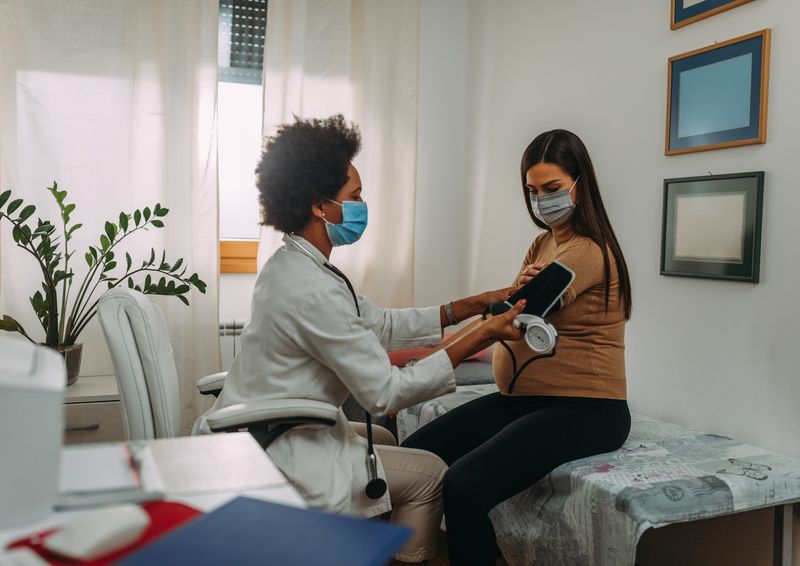Current Issue
Current Issue
Dan is a Staff Writer and Editor at The Scientist. He typically works on the news desk and joined the team in 2021. He has a background in neuroscience and earned his master’s in science journalism at New York University.
View full profile.
Learn about our editorial policies.
ABOVE: Regularly monitoring blood pressure during pregnancy can help spot signs of preeclampsia © ISTOCK.COM, BERNARDBODO
New research suggests that a simple blood test could allow doctors to screen for preeclampsia, a condition marked by dangerously high blood pressure during pregnancy, far more accurately than they can today.
Preeclampsia is thought to stem from improperly developed blood vessels in the placenta, according to the Mayo Clinic. While it can be asymptomatic, the condition sometimes progresses to eclampsia during pregnancy, which can damage organs including the kidneys, liver, and lungs, and can also cause stroke, cardiovascular disease, and brain injuries. In severe cases, doctors will deliver the baby early in order to save the pregnant parent, which can lead to health complications of its own. A study published in Hypertension last September identified a 15-fold increase in maternal mortality caused by hypertensive disorders between 1979 and 2018, illustrating the need for better diagnostics and treatments.
Research published Wednesday (January 5) in Nature describes a new way to predict preeclampsia, months before symptoms appear, by detecting cell-free RNA (cfRNA) markers present in the bloodstream that indicate a greater risk of developing the disease. The results are modest: the test has a roughly 75 percent sensitivity rate and a positive prediction value of 32.3 percent. That means it failed to predict roughly one in four cases of preeclampsia, and that only one person went on to be diagnosed with preeclampsia for every three that the test predicted.
That still represents a marked improvement over preeclampsia prevention today, Science reports. Typically, doctors will prescribe low-dose aspirin to pregnant people with a high body mass index or who are Black, as these factors have been correlated with higher rates of preeclampsia. But many preeclampsia patients lack these factors, so the study notes that relying on them leads to miscalculations of patient risk—and both are as the authors put it, “fraught with bias.”
“Over the years, what has become distressingly apparent is we just don’t have clinical biomarkers or good clinical risk stratification techniques or tools to try to tell someone that she may be at increased risk for spontaneous preterm birth or preeclampsia or any complications in pregnancy,” study coauthor Thomas McElrath, an OB-GYN at Brigham and Women’s Hospital, tells Healio.
Offering clinicians the ability to preemptively target a dangerous, sometimes fatal, pregnancy complication is “groundbreaking stuff,” University of Utah Health OB-GYN and preeclampsia researcher Lauren Theilen, who didn’t work on the new paper, tells STAT.
The 67.3 percent false positive rate may cause needless stress during pregnancy, Science reports. But it notes that preventative measures such as aspirin and monitoring are unlikely to cause harmful side effects, and McElrath suggests that anyone with a positive test result can be sent home with a blood pressure monitor so they can periodically test themselves for added peace of mind.
The paper is “very exciting from a biological standpoint,” Theilen tells STAT, because it could enable clinicians to “actually identify the path of a physiologic process as it is happening before it manifests clinically in an individual person.”
Even if the new test isn’t perfect, it represents a significant step forward for the field, Massachusetts General Hospital OB-GYNs Lydia Shook and Andrea Edlow write in Nature about the new paper.
“This lends further support to abandoning racially biased approaches for diagnosis and treatment that have been found to have little or no utility and that perpetuate racial disparities in health care,” the article reads.
© 1986–2022 The Scientist. All rights reserved.
